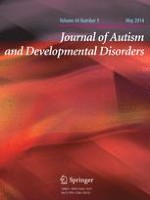01-05-2014 | Original Paper
Using Self-Management to Improve the Reciprocal Social Conversation of Children with Autism Spectrum Disorder
Gepubliceerd in: Journal of Autism and Developmental Disorders | Uitgave 5/2014
Log in om toegang te krijgenAbstract
Individuals with autism spectrum disorders often exhibit difficulties with reciprocal social conversation, engaging in limited verbal exchanges, even when language structures are intact. This study employed a multiple baseline design to examine the effectiveness of a self-management intervention targeting (1) on-topic responsiveness to a conversational partner; (2) expansion of the conversational topic; and (3) on-topic question asking. Results demonstrated improved reciprocal social conversation through elaborated responses and on-topic question asking, which generalized and maintained. Social validity measures by naïve observers indicated that the intervention led to meaningful improvements during conversation, including interest, naturalness, and desirability as a conversational partner.
